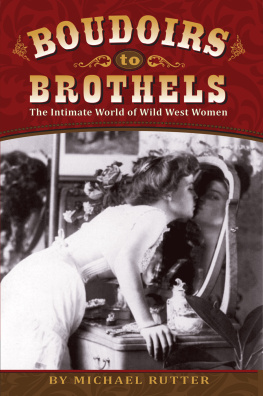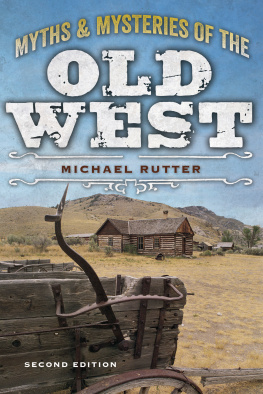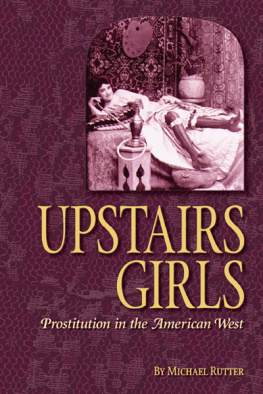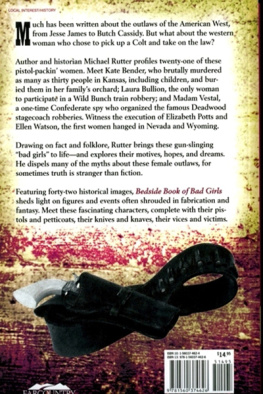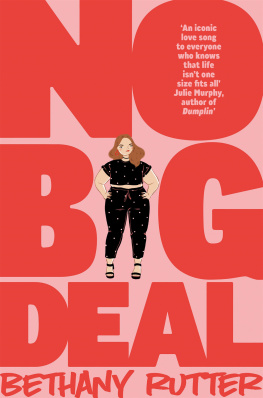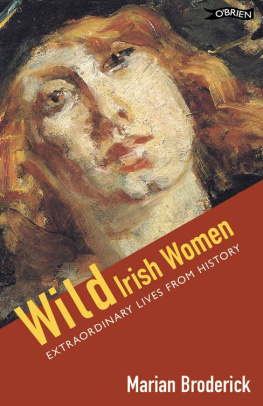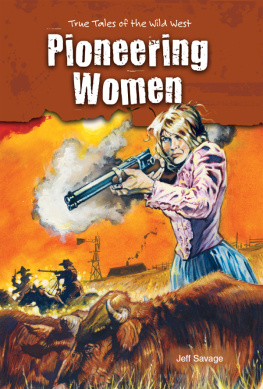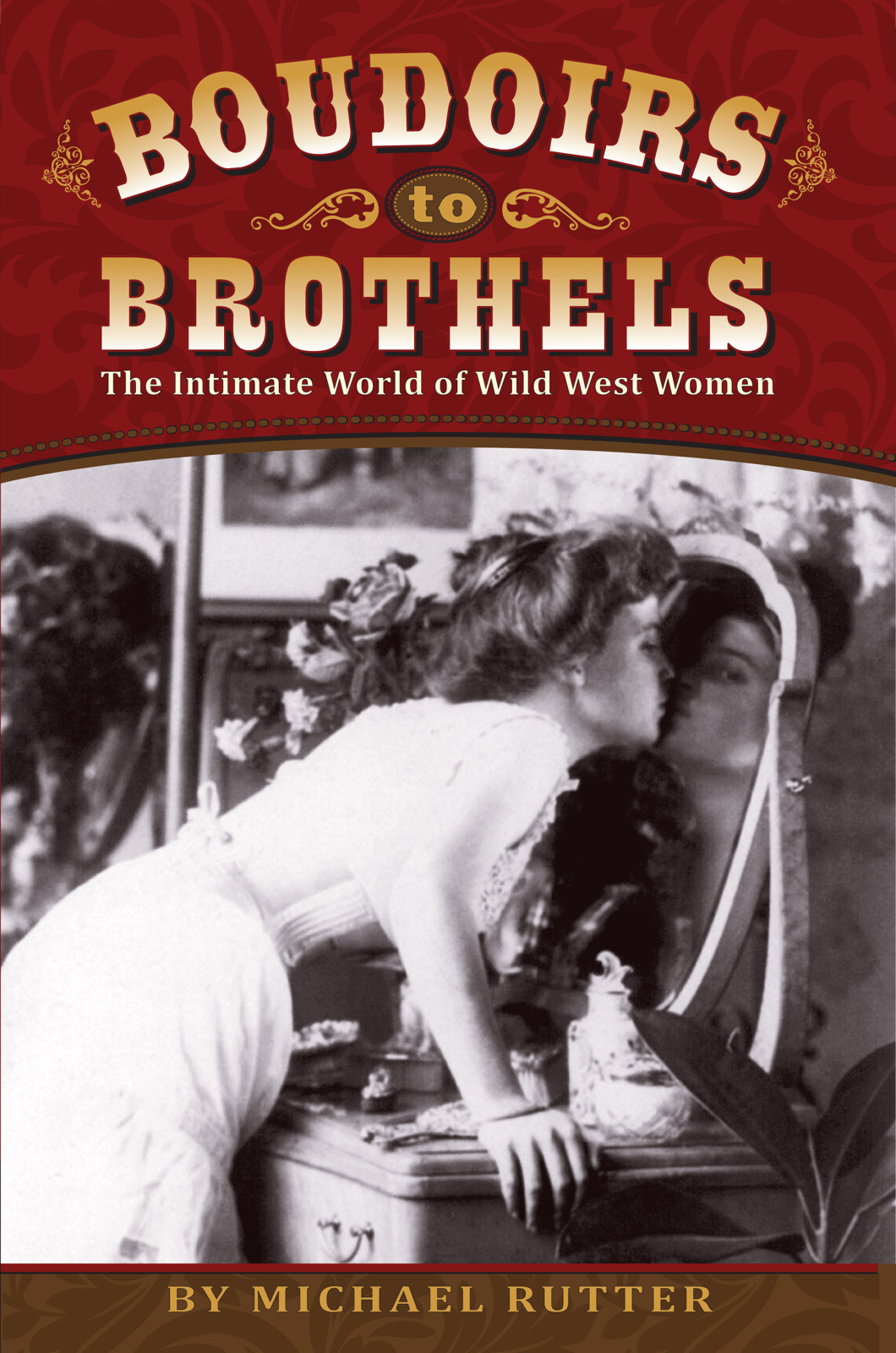Introduction
S omewhere between starvation and physical abuse, between venereal disease and suicide, between social alienation and depression, falls the woman of easy virtue. She might have been a parlor courtesan, a dance hall girl in a saloon, or a streetwalker. Perhaps she was a painted lady in a workingmans brothel, a hooker in a high-volume crib houseor the lowest of all, a whore at a hog ranch. A few women joined the sisterhood to try and make big money; too many felt they had no other option.
One woman, a German immigrant, lost her husband and family in a cholera epidemic while going overland. She was rescued by another wagon train and dropped off at the nearest town. She spoke no English and had nowhere to turn. Within weeks, she was making her living as a high-volume prairie queen, doing forty or fifty men in a long evening. Most of the men were love-starved cowboys off a trail drive. To dull the shame, she drank cheap whiskey until her head buzzed. If money was tight, she took tablespoons of laudanum until she was numb. The half-drunk men she serviced were too anxious to take off their boots or spurs. If she was not too far under the effects of the whiskey or laudanum, she remembered to stretch a rain slicker over the bottom of her bed to catch the mud and manure from her clients boots. This kept their boots from soiling the bedding and their spurs from scratching the bedposts.
Sadly, little is known about the working girls in the American West. Society labeled them as fallen and did its best to sweep them under the table along with the other social misfits. In the nineteenth century, the establishment simply wasnt interested in recording their stories or writing ethnographies about their profession. These women were consumable products who were used and discarded. Until recently, they rarely warranted more than a mention in historical documents. In retrospect, weve come to realize their stories are worth telling and are an important part of our heritage. Ladies of the evening, beyond the war paint and the come-ons, were, after all, human beings. Beyond the haze of whiskey and opium and the smell of unwashed men, they were women and girls who had fears and hopes and aspirations. They had mothers and fathers and sisters and brothers. Like all human beings, they hoped for something better, for love and security, but they were constricted by their profession. They were, after all, sinners, the artificers, the practitioners of venal arts, but they knew too keenly how difficult it was to escape the conventions of their social and economic prisons.
There was a saying among working girls: You can look homeward, honey, but you can never go back again. It seemed that a whore by any other name was still a whore, and society was slow to forgive a fallen sister. If a woman made a wrong turn, she was not only dead to the community, she was dead to her family. As a madam who recruited runaway girls for her brothel casually observed, you befriend herfeed her a square meal, slip her some laudanum, and get her with a man. From that point, shes with you from then on. She cant go home anymoreand she wouldnt even if she were able. Shes ruined. The madam knew it, and the girl knew it.

The ethos of the times formulated a rigid distinction between a good and a bad woman. While it seems an oversimplification by modern considerations, there was an imaginary line that one could not cross without dire consequences. It placed a woman on one side or the other of an unyielding morality. Plainly stated, you were either good or you were not. It was as one-sided as that. The question of a womans virtue was black or white. A decent woman was a creature to be honored and respected. She had virtue and was the embodiment of womanhood. She was the wife, the sister, the mother, and the daughter.
Because of her moral choices, a fallen angel must therefore be a bad woman. She was the whore, the lady of the evening, or the shady lady who had forfeited her greatest gifts for thirty pieces of silver. She had lost her God-given rights to be a true woman. Indeed, so potent were a good womans powers, some argued her virtue would keep her from getting a venereal disease if her husband strayed. Like the fallen angels of heaven, a prostitute had chosen darkness while standing in the light and was thus a social pariah, a moral leper. She was unfit to associate with decent folk. She corrupted the morals of weaker men, men who naturally fell prey to her siren call. She was a public woman who had slid from grace by giving up her precious morality. Her choices also cost her many of her civil rights. In western towns, it was difficult for a so-called common woman to have the law treat her fairly or give her due cause. For this reason, it was nearly impossible to prove a rape or a physical assault charge if you were a prostitute. In the eyes of the law, such a woman was hardly a citizen. And because she was common, how could rape be an issue?
A man had moral latitude and a handy double standard working in his favor. By his nature and gender, society felt he was more venal, like Father Adam, and thus more prone to the carnal flirtations and the seductive machinations of fallen Eves. A man stumbling was at least understandable, if not predictable, especially in boomtowns where men outnumbered women several hundred to one. Prostitutes were welcomed in boomtowns as a necessary service. It was a given that men left to their own devices made poor moral choices. However, as towns grew and developed, and decent women started to populate the physical and cultural landscape, bawdy women didnt go away but were shamed and placed in the unseen corners. It was understood that with the help of a good woman, men could be brought back under control. A good woman could reverse a mans natural proclivity toward the carnal, sensual, and devilish and fight to keep him on that straight and narrow path.
Western women were proactive, being the first in the United States to win the vote. They did more than talk about reform at tea parties. They fought to clean up their towns and rid their communities of the moral vices they felt threatened their families. City fathers paid public lip service to feminine protestations for decency, but these men were also pragmatists. They knew that taxes, licenses, and fines from prostitutes (as well as other sin taxes) were a significant part of a municipalitys revenue. For example, in Wyoming public education was funded largely by prostitution. Leaders periodically arrested, jailed, or sent prostitutes out of town on a rail as an act of good faith, paying lip service to calls for moral purity, but it was a delicate political balance. To placate the good women of the town, many communities developed an out-of-sight out-of-mind policy. They created sin districts, often called the red light district, the line, the tenderloin district, or the other side of the tracks, so decent folk could avoid associations with the fallen. Prostitution didnt go away, of course, but it retreated to the back alleys in the seedy parts of town.

